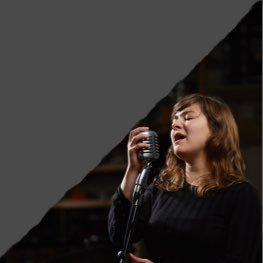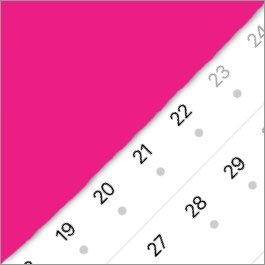IMPROVISING IN A LATIN STYLE
By JJ Wheeler – musician, teacher and record producer
In this context, the term Latin refers to a large group of musical styles mostly originating from Spanish and Portuguese speaking communities in South America. These styles sometimes also incorporate elements of African music, introduced by the slaves transported to and through the area. Some common examples of Latin styles are bossa nova, tango, samba and merengue. Some of these styles have roots as far back as the 16th Century, when European settlers arrived in South America. Salsa, although developed by the Latin-American population more recently in the 1960s and 70s in New York City, is another popular style of Latin music.
The vast majority of Latin styles are intended as music for dancing, often featuring stylistically-specific rhythmic trends and ostinatos, such as ‘claves’ (a set rhythmic pattern or phrase around which the whole rhythmic structure of a piece is formed) or pre-determined call and response parts.
Improvising in a Latin style
It’s important to remember that whichever Latin style you are improvising in, it’s likely that the purpose of the music is to make people dance, so your playing should reflect this. This might mean that you choose to prioritise rhythmic content, making simpler melodies and rhythms feel great, rather than performing complex lines or polyrhythms.
On this note, it’s worth trying to get at least a basic grip on what some of the key trends are in different types of Latin music, how to identify these quickly and how to play within these traits. A lot of these trends are common to several styles of Latin music – sometimes with minor changes – so even if you can’t identify the exact style immediately, you should be able to identify some of the features and improvise within these. Here are a few examples.
Clave: This is known as the ‘keystone that holds the music together’ within Afro-Cuban styles and is usually either a ‘son’ clave or ‘rumba’ clave. Amazingly, the only difference between the two is a shift in just one of the notes of the rhythm, by a quaver (in simple time) or triplet (in compound time).
These patterns might appear either in 3-2 form (as above, the ‘3’ side meaning the first bar, as it has 3 notes in the bar, the 2 being the second bar with 2 notes) or 2-3 form, which simply switches the order of the two bars around. Knowing how the pattern is structured and keeping an ear out for this whilst either soloing or accompanying is incredibly important, as it can help you resolve phrases or rhythmic patterns in the correct place. You could even (at a basic level) copy this rhythm and try soloing or accompanying using it as a repeated ostinato.
Partido alto rhythm: This is common to samba styles and denotes the ‘push’ or tension (off beat quavers) and ‘pull’ or release (on-beat) parts of the basic rhythmic structure.
In this graphic I have added a ‘+’ sign above the off-beat quavers which create tension. The rhythmic tension is resolved and ‘released’ by the on-beats, indicated by a ‘-‘ sign. Good improvisers of all instruments should understand this way of creating rhythmic tension and release, with an ability to end phrases in the same places as the + or - beats. This shows you understand the underlying patterns. Notice that the change-over happens in the middle of the bars, rather than the start or end.
If you want to take the concept of rhythmic tension and release further, you could explore playing against the clave or partido alto rhythm to create ultimate rhythmic tension. Then you can resolve this by ending a phrase within the clave or partido alto.
For pianists and guitarists, whether accompanying or soloing, it is quite common to utilise block chords or simple triadic harmony. Think about taking the 1st, 3rd and 5th notes of a chord scale and using these together or in arpeggiated movements for melodies. Again, we can show advanced improvisational skills easily here by shifting these triads up a semi-tone from the correct chord (creating harmonic tension) and back down again to resolve within the correct harmony.
All instrumentalists, but especially bassists, should note the 2/2 feel for many Brazilian and simple-time variants of Latin music, particularly samba music. This means that, even if the music is written in 4/4 (four quarter-notes per bar), it is better to feel the music in 2/2 (two half-notes per bar). A typical Latin bass-line in this style will emphasise the two half notes, with an ‘upbeat’ added. This creates a heart-beat style rhythm, uplifting and easy to dance to. Often these simply utilise the root and 5th of the chord.
Example improvising videos
Watch videos with session musicians and Rock & Pop examiners JJ Wheeler and Tom Fleming, and session musicians Harry The Piano, and Sam Edgington for tips and ideas on how to improvise in a Latin style:
Influential artists
One of the greatest exponents of purer forms of Latin music, particularly bossa nova songs, was the Brazilian songwriter Antonio Carlos Jobim. Born in Rio de Janeiro in the 1920s, his songbook includes hundreds of titles, most famously ‘The Girl From Ipanema’, which is one of the most recorded songs of all time. Many of his songs have also been adopted into jazz and pop standard repertoire.
The Buena Vista Social Club was formed in Cuba, in the 1930s. This became a hotbed for Cuban musicians to play, develop and perform their craft. So much so that its luminaries include a vast array of the most influential and important Cuban-style Latin musicians, such as Cachao Lopez and Ruben Gonzalez. They shot to world-fame when Ry Cooder recorded the seminal album Buena Vista Social Club, alongside several of the club’s regular patrons and musicians in 1997.
Virtuoso guitarist Carlos Santana is an example of someone who successfully fuses Latin styles with rock music. He first came to fame in the late 1960s/70s with his band Santana, performing hits such as a cover of Fleetwood Mac’s ‘Black Magic Woman’ and ‘Oye Como Va’. He later experienced a huge resurgence in popularity in the early 1990s, and continues to tour stadiums and arenas around the world.
A more recent artist whose music is heavily influenced and based on Latin styles is the singer Shakira. This Colombian-born star started her recording career in the early 1990s, eventually rising to fame in the English-speaking markets (and worldwide) in 2002 with the release of the hit single ‘Whenever, Wherever’. Her style fuses Latin style rhythms and grooves with pop sensibilities, to create an easily recognisable sound of her own, as featured on further hits such as ‘Hips Don’t Lie’.
We often see lots of influences from Latin music throughout many other genres, as well as fusions of styles such as Latin-jazz and Latin-pop.
Latin Spotify playlist
We've pulled together a playlist of Latin songs that appear on our Rock & Pop 2018 syllabus as well as other great Latin and Latin influenced songs for further inspiration and ideas. Follow our Spotify profile and playlists to easily find the playlists whenever you want to have a listen.
About JJ Wheeler
JJ Wheeler is a professional touring and session drummer and percussionist, teacher and record label producer. He has worked with artists such as Celine Dion, worked on West End musicals including The Bodyguard and regularly performs in a range of bands across the UK and abroad. JJ runs workshops, clinics and masterclasses all over the world, and is also a Trinity Rock & Pop examiner.










